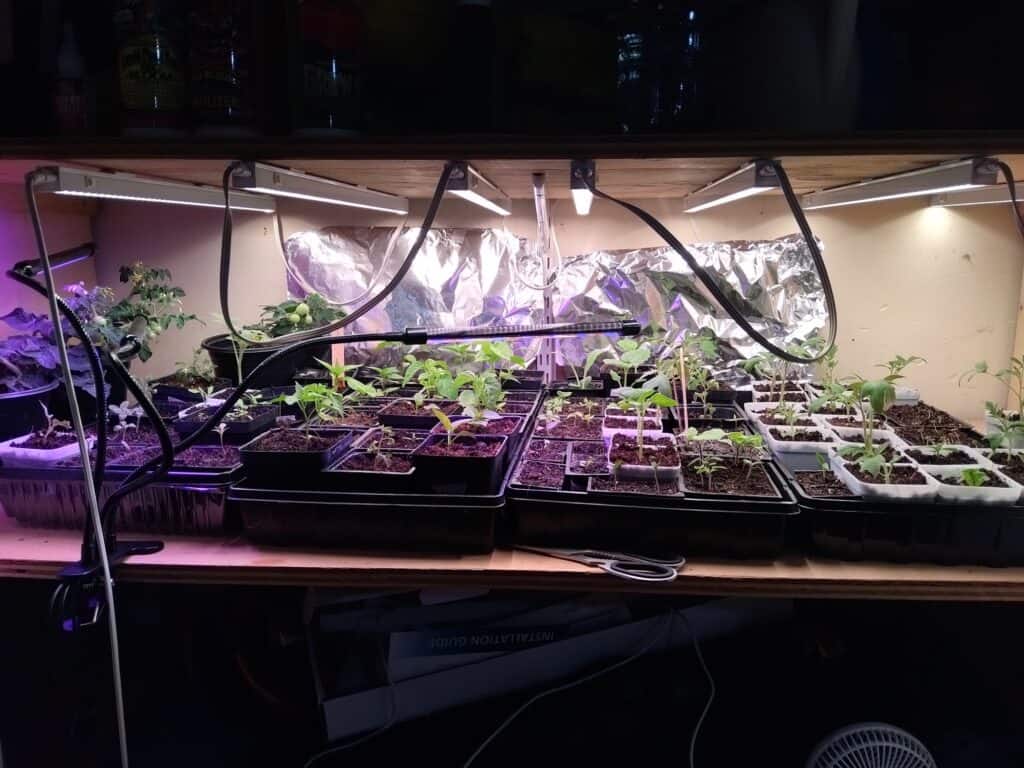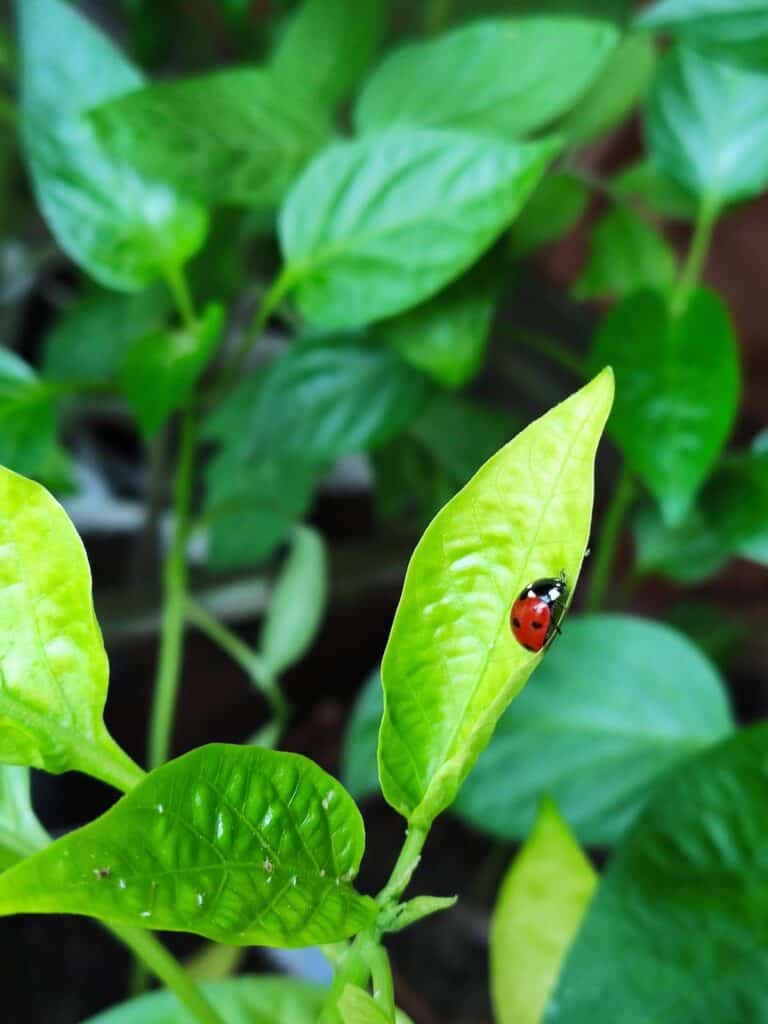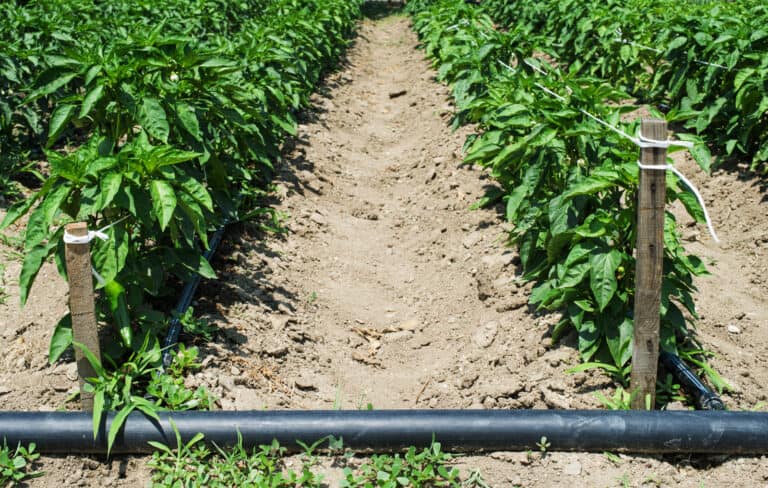How to Plant Pepper Seeds
Growing peppers from seeds is a rewarding and straightforward process that allows you to grow a variety of pepper types, from sweet bell peppers to hot chilies.
This guide will provide you with clear, step-by-step instructions on how to plant pepper seeds, including when to start, how to prepare seeds and soil, and the care required to ensure healthy seedlings.

When to Plant Pepper Seeds
The timing of planting pepper seeds is critical to their successful germination and growth. The general advice is to start your pepper seeds indoors 6 to 8 weeks before the last expected frost date in your area. However, I start mine much earlier to ensure the plants are strong and produce more quickly once transplanted. Typically, I start my seeds in January and then transplant them at the very end of April.
Depending on your location, the planting period typically falls between late winter and early spring.
To determine the best time to plant your seeds, consult a local planting guide or the Farmer’s Almanac to find the last frost date for your area. If you have space and are willing to care for the seedlings longer, you can start your seeds 10 to 12 weeks before the last frost or even earlier. This is especially important for superhot varieties, which can take 4 to 6 weeks to germinate.
Controlling Temperature for Optimal Germination
Peppers are heat-loving plants, and their seeds require warm soil to germinate. The optimal temperature for germinating pepper seeds is between 70°F and 85°F. If the soil temperature is too low, germination will be slow or may not occur at all. To maintain the proper temperature, consider using a seedling heat mat, which can be placed under the seed trays to provide consistent warmth.
Maintaining the right temperature is crucial throughout the germination process. If the environment is too cold, the seeds may fail to sprout or could take much longer than expected. A consistent warm environment helps ensure that the seeds germinate efficiently and develop into healthy seedlings.
Preparing Your Pepper Seeds for Planting
There are mixed opinions about whether or not pre-soaking pepper seeds helps expedite germination. The idea is that the process helps soften the hard outer shell that many hot pepper seeds possess, allowing moisture to penetrate more swiftly, thus quickening the germination process. Some studies have shown this to be accurate, while others provide evidence to the contrary.
Pre-soaking is optional, and some gardeners skip this step without issue. I have never pre-soaked my seeds and still generally have good germination. Whether you choose to soak your seeds or not, it’s essential to plant them in a warm environment to support their growth.
If you’d like to try soaking your seeds, place them in a bowl of lukewarm water for about 2 to 8 hours or overnight. Ensure the bowl is covered to maintain the water temperature. Some gardeners also add a touch of seaweed extract or compost tea to the water, providing additional nutrients and encouraging a more vigorous germination.
Beyond pre-soaking, using a heat mat that maintains the soil temperature between 70 and 80°F can be helpful as pepper seeds thrive in warmth. Furthermore, covering the seed tray or pot with a plastic sheet will help retain moisture and keep the soil warm, creating a mini greenhouse effect that promotes quicker germination.
In some cases, light can be another factor in successful germination, as some seeds germinate more effectively under lighted conditions. Plus, providing light before the seeds sprout ensures that the seedling immediately receives light and does not become leggy.
Testing Germination Rates
Testing the germination rate of your pepper seeds can save you time and effort by ensuring that the seeds you plant are viable. To test germination rates:
- Take about ten seeds and place them on a damp paper towel.
- Fold the towel over the seeds and place it in a plastic bag or sealed container.
- Store the bag in a warm area, checking daily for germination.
After a few days, you’ll see which seeds have sprouted. To calculate the germination rate, divide the number of sprouted seeds by the total number of seeds tested and multiply by 100. For example, if 7 out of 10 seeds sprout, the germination rate is 70%. This information will help you decide if you should plant more seeds to achieve the desired number of plants or if it’s worth purchasing new seeds.
How Deep to Sow Your Pepper Seeds
Pepper seeds should be sown at a depth of about ¼ to ½ inch into the soil. This depth provides the right balance, allowing the seeds to retain moisture needed for germination while not being buried too deep, which could hinder their emergence. A common mistake is planting the seeds too deep, leading to slow or failed germination. On the other hand, planting them too shallow may expose the seeds, causing them to dry out before they can sprout.
To plant the seeds, use your finger or a dibbler to create small holes in the soil, then gently place the seeds in the holes and cover them with soil. Firm the soil lightly to ensure good contact between the seed and the soil.
How Many Pepper Seeds Per Hole?
When planting pepper seeds, it’s often recommended to plant 2 to 3 seeds per hole. This practice increases the likelihood that at least one seed will germinate in each spot, especially if the seeds are older or of questionable viability. After the seeds germinate, you’ll need to thin the seedlings, leaving the strongest one to grow.
Thinning is an essential step because overcrowding can lead to competition for resources, which can weaken the plants. If more than one seedling emerges from a single hole, use scissors to snip the weaker seedlings at the soil level, rather than pulling them out, to avoid disturbing the roots of the remaining seedling.
I take a similar but slightly different approach. Rather than planting two seeds to a hole, I plant two seeds on opposite sides of the cell. Pepper seeds are resilient, so I’m able to separate the seedlings when I pot up rather than having to thin the seedlings.
Essential Tools and Supplies for Starting Pepper Seeds
Note: This article contains affiliate links, which means that if you click and purchase, we may earn a small commission at no extra cost to you. Thank you for supporting our content!
Starting pepper seeds requires a few essential tools and supplies. Here’s what you’ll need:
- Seed trays or pots: These will hold the soil and seeds during the germination process.
- Seed-starting mix: A light, well-draining soil mix that’s ideal for seed germination.
- Seedling heat mat: Maintains the soil temperature between 70°F and 85°F.
- Grow lights or a bright window: Provides the necessary light for seedlings to grow once they have germinated.
- Plastic cover or dome: Helps retain moisture and warmth, creating a mini greenhouse effect.
These tools and supplies will make the process of starting your pepper seeds easier and more successful.
Caring for Your Pepper Seedlings
Once your pepper seeds have germinated, it’s crucial to provide the proper care to ensure they develop into strong, healthy plants. Here are the key aspects of caring for your seedlings:
Transplanting: When the seedlings have developed at least two sets of true leaves and the risk of frost has passed, they’re ready to be transplanted outdoors. Before transplanting, harden off the seedlings by gradually exposing them to outdoor conditions over a week. This process helps them adjust to the new environment, reducing transplant shock. Keep in mind, pepper plants can only be transplanted after your last frost date.
Watering: Keep the soil consistently moist but not waterlogged. Overwatering can lead to root rot and other issues, so it’s essential to find the right balance. I like to water from the bottom rather than pouring water on the top of the soil, and I only water every 2-4 days depending on if the soil still feels moist.
Light: Pepper seedlings require plenty of light to grow. Provide at least 6 to 8 hours of sunlight per day. If you’re using grow lights or your lighting isn’t especially strong, you may want to provide up to 12-14 hours of light.
Fertilization: Start fertilizing the seedlings once they develop their first set of true leaves. Use a balanced, water-soluble fertilizer diluted to half strength and apply it every two weeks.
Troubleshooting Common Issues
Even with the best care, you may encounter some common issues when growing pepper seedlings:
- Damping Off: This fungal disease causes seedlings to collapse and die. To prevent it, ensure good air circulation, avoid overwatering, and use sterile soil mix. If you notice damping off, remove affected seedlings immediately.
- Leggy Seedlings: If your seedlings are tall and spindly, they may not be getting enough light. Move them to a brighter location or increase the duration of artificial light.
- Yellowing Leaves: This can indicate nutrient deficiencies or overwatering. Adjust your watering practices and consider using a balanced fertilizer to correct the issue.
By addressing these issues promptly, you can help your pepper seedlings grow into healthy, productive plants.
Planting pepper seeds is a straightforward process that can lead to a rewarding harvest of fresh, homegrown peppers. By following the steps outlined in this guide—starting with the right timing, maintaining optimal temperature, preparing seeds, and providing proper care—you can successfully grow strong, healthy pepper plants.






